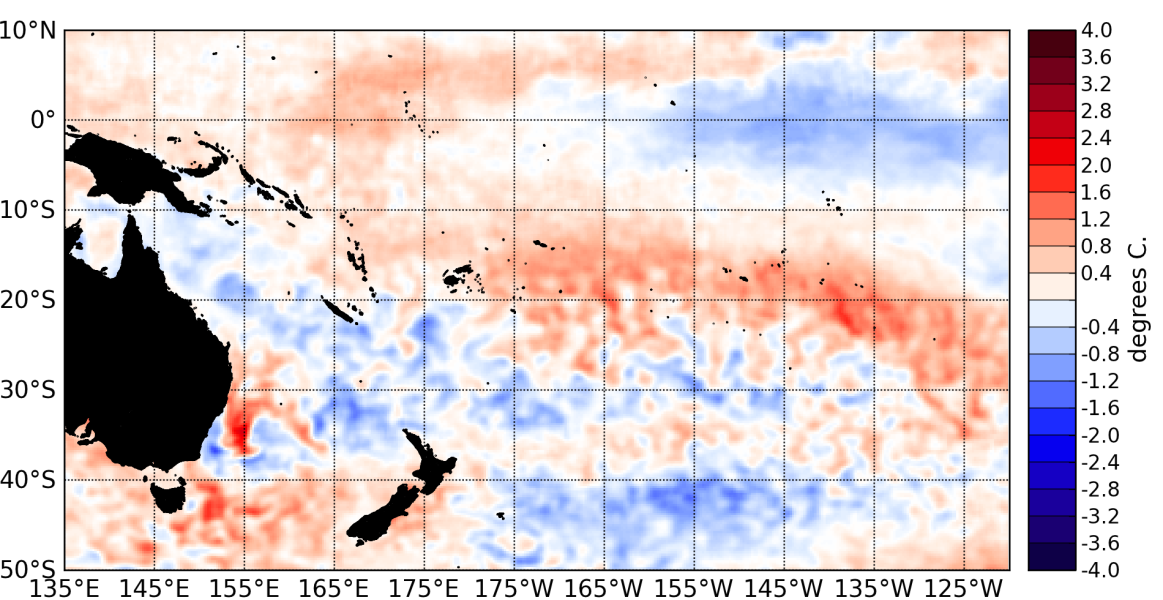The equatorial Pacific Ocean reflects ENSO-neutral conditions.
December SST values of +0.1°C existed for NINO3 and +0.5°C for NINO4. The SOI dropped in December to –0.8, with a 3–month average (October– December) of –0.1.
The region of warmest SST anomalies is still centered west of the Dateline, and there are weak negative SST anomalies along the Equator in the far eastern Pacific.
A warmer than normal sub–surface temperature anomaly persists at about 100m depth, but since November this has weakened and retreated westwards to near the Dateline.
Other ENSO indicators, such as low level winds in the tropical Pacific and upper ocean heat content, are weak. Enhanced convection was largely absent from the Indonesian region during December.
The South Pacific Convergence Zone (SPCZ) was quite prominent during the month, and located slightly south of its normal position.
The latest value for the TRMM ENSO index for the 30 days to 2nd January is –0.78, which is on the La Niña side of neutral. International guidance indicates that the tropical Pacific Ocean is very likely to remain neutral over the next three months (January–March).
All the 10 dynamical models and 5 statistical models monitored by NIWA forecast ENSO–neutral SST anomalies for January–March 2013 and also for the following April–June season.
The NCEP 06 December forecast favours neutral conditions to persist into the southern hemisphere autumn. The IRI/CPC joint forecast of 20 December indicates a 94% chance of neutral conditions for the January–March 2013 season, a 5% chance of El Niño, and little chance for La Niña.

